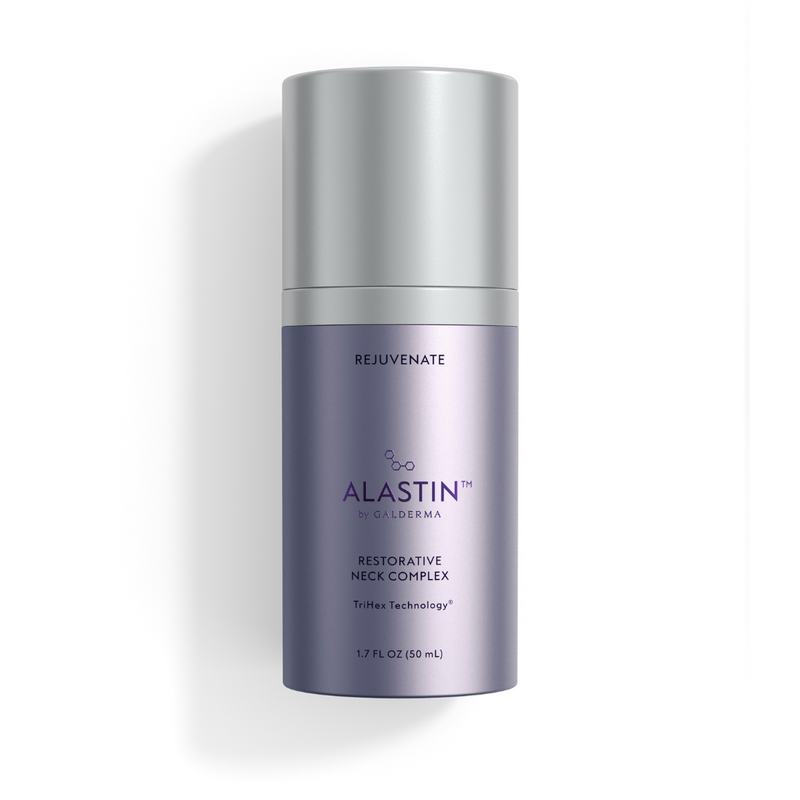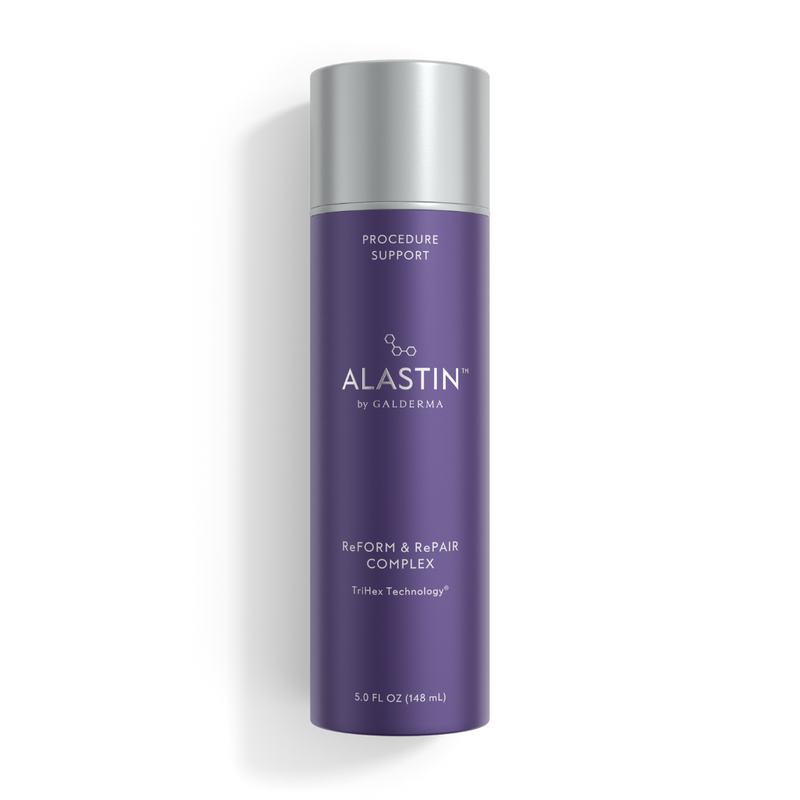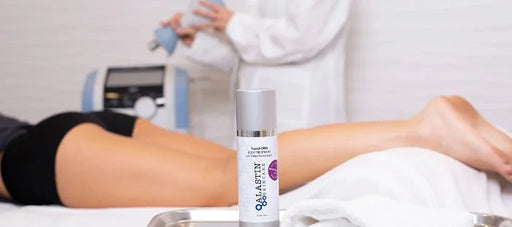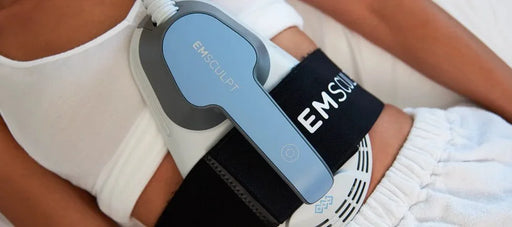You have no items in your bag
SculpSure vs CoolSculpting: Which is Better?

CoolSculpting and SculpSure are becoming some of the go-to body contouring procedures for fat reduction. Although they’re nonsurgical and noninvasive, they both kill fat cells. While CoolSculpting implements extreme cold, SculpSure achieves similar effects via laser technology.
Which body contouring procedure is right for reducing stubborn fat in your problem areas? This depends on your schedule, pain tolerance, and the specific target area or areas. In this blog, we’ll break down the difference between SculpSure and CoolSculpting so that you can choose the procedure that best meets your needs.
What is Lipolysis?
Liposuction was once the gold standard in removing fat (lipids) from the body. This procedure involves making incisions at the site of the problem area and suctioning out unwanted fat.
Now, CoolSculpting and SculpSure provide an alternative—lipolysis.
Lipolysis is the process of breaking fat cells into smaller molecules. Lipolysis procedures, also known as body contouring, use heat, cooling, ultrasound, and other technologies to remove fat without invasive surgery.
How do they work?
- Fat tissue is more sensitive to heat, cold, and other stimuli than surrounding tissue (skin, connective tissue, muscles, etc.).
- When heated or cooled to a certain extreme, fat cells break down into their component parts. However, these molecules (and their mass) do not automatically disappear from the body.
- Instead, other cells eventually carry the broken-down cells into the bloodstream. The cells are slowly eliminated from the body in a process that can take up to three months.
While new lipolysis procedures may not have the same fast effects as liposuction, they have one major advantage: dramatically reduced recovery time.
Liposuction can result in bruising and sensitivity for up to six weeks.1 In contrast, modern lipolysis procedures are often advertised as “zero down time.” While individual results may vary, you can often get back to your routine within days (or even hours).
Next, we’ll take a closer look at two of the most popular lipolysis procedures—SculpSure and CoolSculpting.
SculpSure 101
SculpSure is a lipolysis procedure that uses laser heat to reduce the appearance of unwanted fat. Laser lipolysis has been an FDA-approved technology since 2006.2 Below, we’ve detailed a quick snapshot of how it works:
- Laser heat effectively liquefies fat without damaging surrounding tissue. Once fat cells have been killed, the body gradually eliminates the destroyed fat cells
- The procedure also promotes tissue and skin tightening
- Some results may be visible within a few weeks, but the full effects will appear after the body has eliminated the dead cells.
Many people who undergo laser lipolysis are happy with their results. A 2017 study in Lasers in Surgery and Medicine yielded impressive findings3:
- Three months after the procedure, high-resolution photographs revealed an average fat reduction of 2.6 mm
- 96% of subjects were satisfied with their results
2.6mm may not sound like a lot, but this translates to a fat reduction of up to 24%. Next, we’ll delve into the details of this procedure.
SculpSure Target Areas
A slightly newer technology than CoolSculpting, laser lipolysis is FDA-approved to remove excess fat in the following areas4:
- Torso and belly
- Love handles at the sides of the hips
- Back
- Thighs
SculpSure does not need to suction skin, so it can be performed even on small fat deposits.
An additional perk of this technology is that you can safely treat several areas in a single fat reduction treatment session. Because the SculpSure treatment is so fast and noninvasive, you can receive the treatment in up to four areas at once.
SculpSure is primarily intended for individuals with a BMI under 30.5
If you’re relatively in-shape and aiming to reduce fat in a specific problem area (or two), the SculpSure treatment may be right for you. If your goal is losing significant fat and weight loss, it may not have the effect you’re after.
Getting SculpSure
What should you expect when you get SculpSure? This technology is sometimes nicknamed “lunchtime lipo” because it’s so fast.
- A SculpSure session typically lasts twenty-five minutes
- Due to the intense heat from the lasers, some find SculpSure uncomfortable. However, there are cooling cycles built into the process
- There is no suctioning of the skin, so there is typically little bruising afterward
Advertised as a “zero down time” procedure, you may experience slight sensitivity at the site of your treatment, but can likely go about your normal routine shortly afterwards.
CoolSculpting 101
Are you wondering how coolsculpting works? Like SculpSure, CoolSculpting kills fat tissues. However, in this case, it does so through the process of cryolipolysis—subjecting cells to extreme cold.
- Fat is more sensitive to cold than surrounding tissue, and freezing it triggers apoptosis, or cellular death
- As with SureSculpt, it may take up to three months to experience the full effects of the procedure
How effective is cool sculpting?
One of the most popular dermatological procedures in America, the CoolSculpting treatment has relatively high satisfaction ratings.
A 2013 study in Dermatologic Surgery studied the effects of cryolipolysis after three months.6
- Participants saw an average 23% reduction in fat
- 96% found the procedure tolerably comfortable
- 73% of subjects were satisfied with their results
According to another study, people who undergo CoolSculpting can reasonably expect an 80% decrease in the top layer of fat.7
Targeting Areas With CoolSculpting
While SculpSure can target multiple areas, including thin layers of fat, CoolSculpting is a slightly different technology.
Because CoolSculpting suctions skin before cooling it, you can generally only receive CoolSculpting in areas with enough extra fat to pinch.
However, the procedure has a very wide range of FDA-approved uses. Potential target areas include:
- The torso and belly
- Love handles
- Upper arms and bra area
- Thighs
- The upper thighs or “under butt”
- Excessive neck fat and “double chins”
Getting CoolSculpting
What can you expect when you go in for a CoolSculpting session? Minimally invasive, this procedure is also quick and relatively comfortable:
- A CoolSculpting session may last from 30-60 minutes, depending on the size of the target area
- Because it works by cooling, many people experience a numbing effect during the session
- However, suctioning may create bruising or skin sensitivity. Side effects may appear immediately after the session or take a few days to show up
Most people’s side effects from CoolSculpting (if any) clear up within two weeks.
Choosing the Right Procedure for Your Beauty Goals
Which is better for your needs—CoolSculpting or SculpSure? To help you choose, we’ll compare them across a few key variables:
- Fitness level – If you’re already in good shape and simply want to target a few areas of excess fat, SculpSure may be a great fit. If you want to remove a larger amount of fat, consider CoolSculpting.
- Problem area – If you want to target one specific area—whether it’s your double chin, belly, or back—CoolSculpting is probably approved to target it. You’ll just need to make sure there’s enough fat to pinch. Keep in mind that SculpSure is only FDA-approved for the thighs, belly, and love handles.
- Schedule – If you’re looking for the fastest procedure with the fastest recovery time, SculpSure may edge out CoolSculpting. Since it takes just twenty-five minutes and usually has zero downtime, you can literally schedule your procedure at lunch.
- Comfort level – Some people find CoolSculpting slightly more comfortable than SculpSure due to the numbing effect of the cold. If you’re worried about discomfort during the procedure, CoolSculpting may be right for you.
Consult with your skin professional to find out more about the cost and suitability for each of these procedures.
Lipolysis Aftercare
Fat removal has come a long way since the days of liposuction.
Now, thanks to technologies like SculpSure and CoolSculpting, it’s relatively fast and painless to remove fat from tricky areas that don’t respond to exercise or conditioning.
Nonetheless, lipolysis is done through your skin, which means that your fragile epidermis is exposed to extreme heat and cold.
- You probably slather on moisturizer in the winter and spritz your skin with aloe and other treatments after a day at the beach. Likewise, your skin may need extra TLC after your procedure.
- In addition, your skin will need to adjust to the changing surface underneath it. If you’re worried about sagging skin at the site of your treatment, choose a product that helps tone and tighten skin.
Our TransFORM Body Treatment with TriHex Technology® is a patented, medical-grade skincare product specifically designed to nourish skin after a body contouring procedure.
TriHex Technology® can speed up the process of cellular turnover, helping your body to accelerate the process of removing fat cells.
In addition, TransFORM Body Treatment helps your skin to produce elastin and collagen. This can aid in maintaining firm, smooth skin after your procedure.
For best results, integrate TransFORM into your daily skincare routine pre- and post-procedure.
Sources:
- Salemy, Shahram. “What you need to know about your liposuction recovery.” American Society of Plastic Surgeons. https://www.plasticsurgery.org/news/blog/what-you-need-to-know-about-your-liposuction-recovery
- McBean, Jason and Bruce Katz. “Laser Lipolysis.” The Journal of Clinical and Aesthetic Dermatology 4.7 (2011) https://www.ncbi.nlm.nih.gov/pmc/articles/PMC3140909/
- Decorato, John et al. “Subcutaneous adipose tissue response to a non‐invasive hyperthermic treatment using a 1,060 nm laser.” Lasers in Surgery and Medicine 49.5 (2017). https://onlinelibrary.wiley.com/doi/full/10.1002/lsm.22625?casa_token=C8rsr76iO10AAAAA%3AclhKgubGR8Mor5GYZkhzvMj25d6vaszaYh0uuGLOElSANFMfRgxruvhhfEfh3F4Jj66dK-bvNzlWDw
- “SculpSure.” FDA. https://www.accessdata.fda.gov/cdrh_docs/pdf15/k150724.pdf
- Ibid
- Dierickx, Christine et al. “Safety, Tolerance, and Patient Satisfaction With Noninvasive Cryolipolysis.” Dermatologic Surgery 39.8 (2013). https://onlinelibrary.wiley.com/doi/abs/10.1111/dsu.12238
- Krueger, Nils et al. “Cryolipolysis for noninvasive body contouring: clinical efficacy and patient satisfaction.” Clinical, Cosmetic and Investigational Dermatology 7 (2014). https://www.ncbi.nlm.nih.gov/pmc/articles/PMC4079633/
$158.00
$220.00
$268.00











